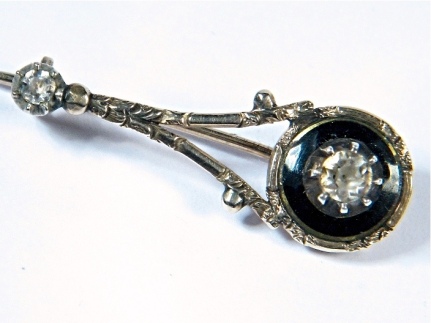
This piece from my collection is an antique English, 9-carat gold comet mourning pin. It is beautifully made, with a hand-chased stylized tail, black enamel embellishment, and a glittering foiled paste stone in silver settings, clearly displaying a black spot to simulate the open culet of a diamond.
The unusual shape of the brooch commemorates the return of Halley’s Comet in 1835. Although this piece neither contains a loved one’s hair nor bears an inscription, the use of black enamel almost certainly associates it with loss during the comet pass year.
Halley’s Comet is named after English astronomer Edmond Halley, who studied previous sightings and correctly predicted its 1758 apparition. The comet returns every 75 years, with its last apparition in 1986 and its next to come in 2061. I will be 98, if I live to see it.
The first report of the comet is from its pass above China in 467 B.C. (Centuries later, during another apparition, the Chinese would call it by the beautifully evocative name, “Broom Star.”) The British Museum, London, holds other documentation in the form of cuneiform tablets describing the comet’s appearance over Babylonia in late September, 164 B.C.
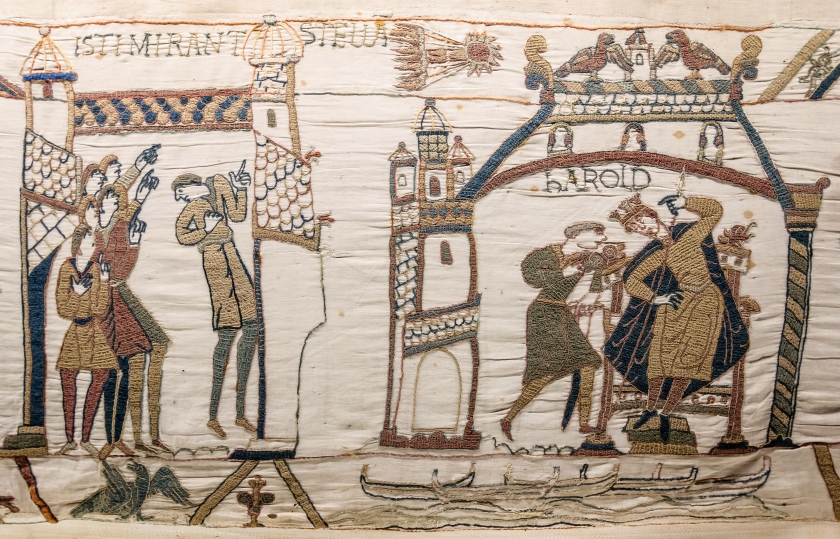
Throughout history, the comet’s apparitions brought fear and awe to earthbound viewers, who saw comets as a predictors of great and potentially horrific events. In 218, for example, Roman historian Dio Cassius termed it “a very fearful star,” and of the 1456 comet pass, Bartolomeo Platina named it “a hairy and fiery star” that he heard would bring “grievous pestilence, dearth, and some great calamity.” Its 1066 apparition is commemorated by the Bayeux Tapestry—the great embroidered epic of the Norman Conquest—as a portent that Duke William of Normandy’s ascension to the throne of England was literally writ in the stars.
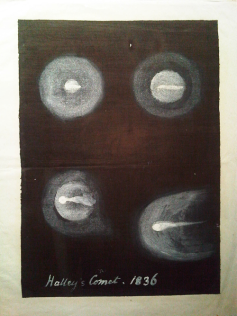
The 1835 comet apparition predated photography by nearly a decade, but astronomical drawings were made by Sir John Frederick William Herschel from a position in South Africa. In the lead up to Halley’s Comet’s arrival, and during the months it graced the night sky, Georgians indulged their love of symbolism and used the shape of the comet, with its long tail, as the basis for generally singular, and relatively expensive, gold jewelry—although pinchbeck and gilt 1835 brooches can be found. These pieces commemorated the comet apparition in conjunction with the human events that transpired during its nightly reign, such as births, betrothals, marriages, and deaths.
My brooch fits the latter of these, but there are many stunning examples that evoke the joy and wonder felt by those with comet fever. For example, the lovely duo below, sold by Rowan & Rowan, are gold with a foiled citrine and garnets.

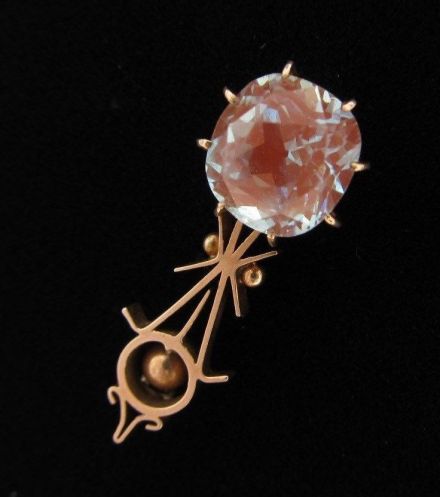
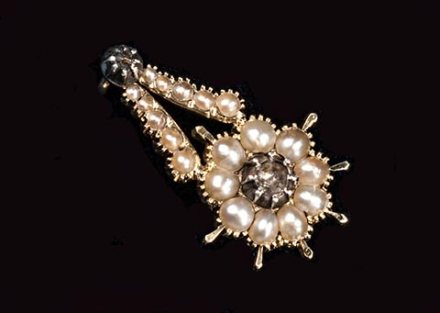
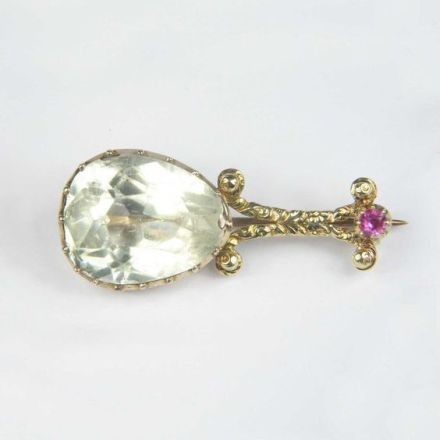
Halley’s was not the only comet visible to those living in the 19th Century. Stuart L. Schneider, the author of Halley’s Comet: Memories of 1910, noted, “Most people who saw Halley’s comet in 1986 were disappointed with the comet’s showing. We were not as fortunate as the folks living in the 1800s…. In 1811 there was a beautiful comet with a tail 100,000,000 miles long. It was called the Great Comet of 1811 and was visible for 17 months. In 1843, a comet appeared … with a tail twice as long as that of the Great Comet of 1811. Abraham Lincoln commented on Donati’s Comet of 1858. It appeared during the Lincoln-Douglas debates. Civil War soldiers saw the Comet of 1861, which had six or more tails. In 1874, Coggin’s Comet appeared in the skies, and in 1882 a comet appeared that was visible for 4 months.”
I own another comet brooch that may commemorate one or both of the century’s unexpected celestial visitors, Comet Tebbutt C/1881 K1, or the Great Comet of 1881, and the Great Comet of September 1882, C/1882 R1, which Schneider alluded to above.
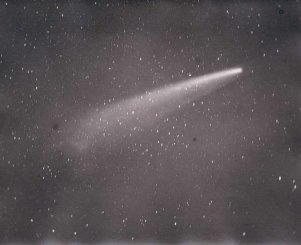
Comet Tebbutt was visible during the summer and Autumn of 1881, finally becoming lost to observers in early 1882. It was followed later that year by another comet of such luminosity that, at its perihelion, it was visible next to the sun in the daytime sky.
After it was gone—“buried in the darkness of space”—Professor H. A. Howe of Denver University wrote in The Sidereal Messenger’s May 1884 issue, “This great comet has fled from the gaze of man, and thirty generations of astronomers will pass away before it will submit itself to human scrutiny. Then, perchance, it will again burst unexpectedly into view, to be firmly bound by the chains of mathematical analysis, which, more tenuous than gossamer, are stronger than steel.”
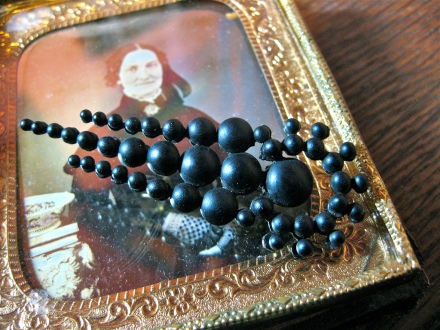
When Halley’s Comet returned in 1910, it brought age-old fears with it, as well as a new wave of comet jewelry. Author Christopher S. Cevasco, wrote that the 1910 apparition “came with its own doomsday predictions. One of the gases discovered in the tail through spectroscopic analysis was the toxic gas cyanogen, leading French astronomer Nicolas Camille Flammarion to predict that when the earth passed through the comet’s tail, the gas ‘would impregnate the atmosphere and possibly snuff out all life on the planet.’ Perhaps unsurprisingly, Monsieur Flammarion was not only an astronomer but an author of science fiction novels, and fortunately here it seems he let his imagination run away with him. Notwithstanding many panicked Earthlings running out to buy gas masks, anti-comet pills, and apparently even anti-comet umbrellas, the planet suffered no harm given how diffuse the gas was.”
Samuel Clemens (Mark Twain) also believed in the portents of comets. In 1909, he said, “I came in with Halley’s Comet in 1835. It is coming again next year, and I expect to go out with it. It will be the greatest disappointment of my life if I don’t go out with Halley’s Comet. The Almighty has said, no doubt: ‘Now here are these two unaccountable freaks; they came in together, they must go out together.’” Clemens died 21 April, 1910, just after the comet reached its brightest. Ω
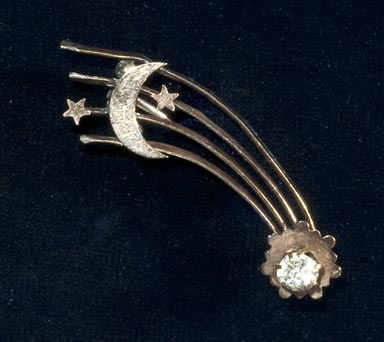
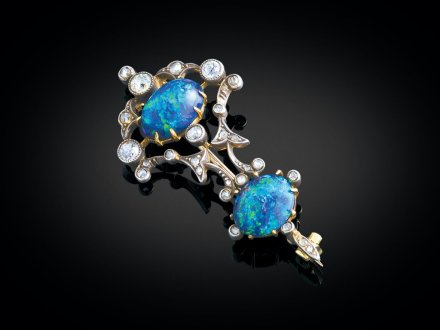


Beautiful broaches. I didn’t realize comet jewelry was a thing. It’s a shame that big events no longer seem to produce lasting mementos.
LikeLiked by 1 person
There were pieces produced in 1986. I’ve seen a few.
LikeLike
Thanks for this – I learned two new things: culet and black opals (wish I could afford a nice one of those). One thing though: the Bayeaux tapestry isn’t actually a woven tapestry, it’s an embroidered cloth.
LikeLiked by 1 person
Thank you for the correction!
LikeLike
Hi, Thanks for showing some of my photographs of comet pins in your article. The pieces photos taken from my website – http://www.wordcraft.net – should be noted as from my website. Please correct that issue. Stuart Schneider
LikeLike
Would you happen to of the detailed provenance of any 1835 brooch, e.g. ownership, who may have commissioned it etc.I wish to know as I am working on an historical novel – it’s a long story, so to speak. Thank you
LikeLike
Unfortunately, I have no additional information on this brooch. I wish I did! I purchased it from a dealer.
LikeLike